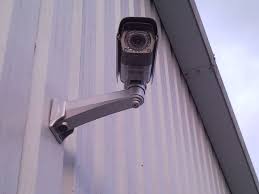Infrared (IR) intensity on Blink cameras refers to the strength of the infrared light emitted by the camera’s built-in IR LEDs, which are used for night vision capabilities. IR intensity is crucial for capturing clear, detailed footage in low-light or complete darkness.
Blink cameras, designed for home security, use IR technology to illuminate the environment without visible light, ensuring discreet monitoring. The intensity can often be adjusted to optimize image quality depending on the distance and size of the monitored area.
Proper IR intensity settings help avoid overexposure, which can wash out the footage, or underexposure, which might miss crucial details. Users must comprehend and adjust the infrared intensity to optimize the Blink's camera function and guarantee dependable surveillance in any lighting scenario.
How IR Intensity Works on Blink Cameras?
IR intensity on Blink cameras emits infrared light through built-in IR LEDs to illuminate dark areas, enabling night vision capabilities. When ambient light levels drop, the camera’s sensors detect the change and activate the IR LEDs.
The emitted IR light, invisible to the human eye, reflects off objects and returns to the camera lens, allowing the camera to capture clear images and videos in low-light conditions.
Users can often adjust the IR intensity settings to suit their specific surveillance needs. Higher IR intensity improves visibility over greater distances but can lead to overexposed images if too strong.
Conversely, lower intensity works well for near objects but may obscure more significant areas. A proper adjustment balances brightness and detail to achieve peak performance.
Adjusting IR Intensity Settings on Your Blink Camera
Adjusting IR intensity settings on your Blink camera is crucial to ensure optimal night vision performance tailored to your specific surveillance needs. The IR intensity settings control the strength of the infrared light emitted by the camera's IR LEDs, impacting how well the camera captures details in low-light or dark conditions.

Open the Blink app on your tablet or smartphone to adjust the IR intensity. To change the settings for a particular Blink camera, navigate to its camera settings. Search for the IR intensity or night vision option, which may be labeled differently depending on the model. Usually, there are settings to adjust the IR intensity, such as turning it up, down, or automatic.
Increasing the IR intensity is beneficial for monitoring larger areas or scenes with objects at a distance, as it provides more vital illumination. However, be cautious of potential overexposure, which can wash out the image. Decreasing the IR intensity suits smaller or closer areas, preventing overly bright spots and preserving detail.
Experiment with different settings in various lighting conditions to find the optimal balance. Properly adjusted IR intensity enhances image clarity and detail, ensuring effective surveillance regardless of the time of day or night. Regularly reviewing and tweaking these settings can significantly improve your Blink camera’s performance and reliability.
When to Turn Up or Down IR Intensity
Adjusting IR intensity on your Blink camera is essential for capturing clear footage in different environments. Turn the IR intensity when monitoring larger areas or when objects are further away, as the increased infrared light will enhance visibility over greater distances. This is particularly useful for outdoor settings or expansive indoor spaces where details at a distance are crucial.
Finding the Right IR Intensity Balance
Conversely, turn down the IR intensity when focusing on smaller or closer areas to prevent overexposure and ensure the footage is not washed out. This adjustment is ideal for compact spaces like hallways or rooms where objects are nearer to the camera.
Balancing IR intensity based on your specific surveillance needs enhances image quality, ensuring that crucial details are captured effectively in all lighting conditions.
Finding the right IR intensity balance for your Blink camera is essential for achieving optimal image quality in varying light conditions. Start by assessing the surveillance area, noting the distance and size of the space.

Increasing the IR intensity for more extensive, open areas or when objects are far from the camera ensures better illumination and detail. However, high IR intensity can cause overexposure in smaller or closer settings, washing out crucial information.
Gradually adjust the parameters and observe how the camera performs at various IR intensity levels. Verify the video's sharpness, ensuring that neither excessively bright nor dark regions take center stage.
Regardless of the lighting conditions, routinely checking and adjusting these settings makes maintaining the proper balance and producing clear and detailed surveillance films much more accessible.
Tips for Optimizing IR Intensity on Your Blink
Assess Your Surveillance Area
Recognize the region you wish to monitor's size and distance. To prevent overexposure, greater IR intensity is needed in larger areas, and lower values are needed in smaller, enclosed locations.
Test in Different Lighting Conditions
Experiment with the IR intensity settings in various lighting scenarios. Observe the camera's performance at different times of the day and night to find the optimal balance.
Avoid Overexposure
High IR intensity can cause bright spots and washout details. Reduce the intensity if you notice overexposure, ensuring the footage retains clarity and essential information.
Check for Underexposure
Too low IR intensity can result in dark, unclear footage. Increase the intensity if the images appear too dark, ensuring that objects and details are visible.
Use the Automatic Setting
Many Blink cameras have an automatic IR intensity setting. This feature adjusts the IR light based on ambient lighting, providing a balanced solution for most environments.
Regularly Review and Adjust
Periodically review the recorded footage and adjust the IR settings as needed. Seasonal changes and varying lighting conditions may require different settings to maintain optimal performance.
What is a good sensitivity for a Blink camera?
A good sensitivity setting for a Blink camera depends on your specific monitoring needs and environment. Sensitivity in Blink cameras determines how easily the camera detects motion and triggers recordings or alerts.
A lower sensitivity setting for high-traffic areas, such as front porches or living rooms, helps reduce false alarms from minor movements like passing cars or pets.
On the other hand, greater sensitivity ensures that any motion, even minute movements, is picked up in low-traffic areas or while monitoring certain activities.

You can strike the ideal balance by experimenting with different sensitivity levels and watching recorded films, ensuring that you record significant events without being inundated with pointless warnings.
The camera's efficacy can be further increased by routinely adjusting the sensitivity by changing activity levels or seasonal variations.
Summary
The article discusses the importance and functionality of IR intensity in Blink cameras, which is essential for clear night vision footage. IR intensity, the strength of infrared light emitted by the camera’s IR LEDs, is adjustable to optimize image quality based on the surveillance area.
Higher intensity suits larger spaces but risks overexposure, while lower intensity is better for smaller, closer areas to avoid washout. Adjusting these settings ensures clear, detailed footage in various lighting conditions. Tips include assessing the surveillance area, testing in different lighting, avoiding over and underexposure, using automatic settings, and regularly reviewing and tweaking settings.
Additionally, the article highlights the importance of setting the camera's motion sensitivity to match specific monitoring needs, balancing high sensitivity for low-traffic areas and lower sensitivity for high-traffic areas to reduce false alarms.
Frequently Asked Questions
About Hamza Liaqat
Hamza Liaqat, our tech maestro, is a software engineer with a passion for cutting-edge technologies and experience of more than 7 years in tech industry. As the founder of DifferentDaily.com, he navigates the tech frontier, unraveling AI, Blockchain, and Web3 intricacies. Hamza's troubleshooting finesse and commitment to practical solutions make him your go-to guide for all things tech. Welcome to innovation, curated by Hamza Liaqat.


